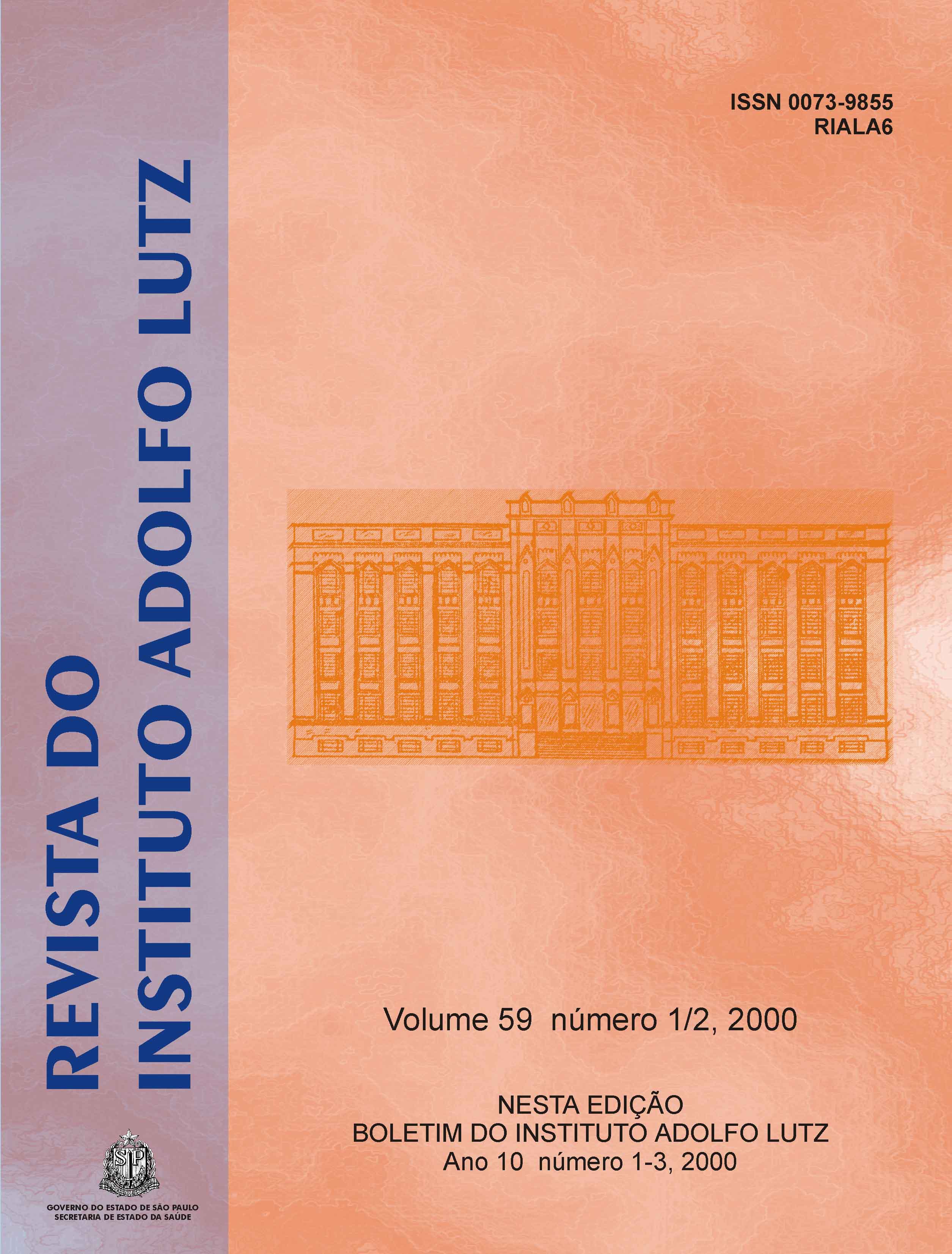Abstract
Orange juice is a food rich in nutrients and widely consumed throughout the world. During the last years many fresh bottled and pasteurized orange juice plants have settled in the cities of Ribeirão Preto and Araraquara, located in the State of São Paulo, Brazil. The objective of the present study was to evaluate the physicochemical and hygienic-sanitary quality of the fresh and pasteurized orange juices consumed in these cities. One hundred and thirty fresh and thirty-three pasteurized orange juice samples provided by different plants located in the Araraquara and Ribeirão Preto regions were analyzed. The results showed that for fresh juice 63 (48,5%) samples were in disagreement with physicochemical standards established by the legislation, 8 (6,1%) with relation to microscopic and 65 (50,0%) with relation to microbiological analysis. With regard to the pasteurized juice, 3 (9,1%) and 5 (15,1%) samples did not agree with the legislation according to physicochemical analysis and microscopic examination, respectively. No pasteurized juice sample was in disagreement with the icrobiologic
examination.
References
1. Akinyele, I.O.; Keshinro, O.O.; Akinnawo, O.O. Nutrient losses during and after processing of pineapples and oranges. Food Chemistry, 37(3): 181-8, 1990.
2. American Public Health Association. Technical Committee on Microbiological Methods for Foods. Compendium of methods for the microbiological examination of foods, 3rd ed., Washington, D.C.: C. Vanderzant & D.F. Splittstoesser; 1992.
3. American Public Health Association. Intersociety/Agency Committee on Microbiological Methods for Foods. Compendium of methods for the microbiological examination of foods. Washington: Marvin L. Speck, APHA; 1996.
4. Association Official Analytical Chemists. Methods of Analysis of the Association of Official Analytical Chemists, 15th ed., Washington, D. C.: A.O.A.C.; 1990.
5. Bettini, M. F. M. Estudo de aromas cítricos através de métodos sensoriais, cromatográficos e espectrofotométricos. São Carlos, 1995. [Tese de Doutorado – Instituto de Química de São Carlos, Universidade de São Paulo].
6. Brasil, leis, decretos, etc.... Instrução Normativa nº. 1 de 7 de janeiro de 2.000 do Ministério da Agricultura e Abastecimento. Regulamento técnico geral para fixação dos padrões de identidade e qualidade para polpa de fruta. Diário Oficial da União, 10 jan. 2000. Seção 1, 54-58.
7. Brasil, leis, decretos, etc.... Portaria nº. 371 de 9 de setembro de 1.974 do Ministério da Agricultura. Diário Oficial da União, Brasília, 18 jun. 1959. Seção 1, 26-27.
8. Brasil. leis, decretos, etc.... Portaria nº 451 de 19 de setembro de 1997 da Secretaria de Vigilância Sanitária do Ministério da Saúde. Aprova o Regulamento Técnico – Princípios Gerais para o Estabelecimento de critérios e Padrões Microbiológicos para Alimentos.... Diário Oficial da União, 2 de julho de 1998. Seção 1, 4.
9. Decio, P.; Gherardi, S. Freshly squeezed orange juice. Confructa Studien, 36(5/6): 162-7, 1992.
10. Gava, J. A. Princípios de Tecnologia de Alimentos, 7a. ed. Guarulhos, 1988.
11. Instituto Adolfo Lutz. Normas Analíticas do IAL: métodos químicos e físicos para análise de alimentos, 1, 3a. ed., São Paulo, 1985.
12. Marques, D.S. Citrus juice processing in Brazil. Transactions of the Citrus Engineering Conference, 39:71-84, 1993.
13. Martín, J.J.; Solanes, E.; Bota, E.; Sacho, J. Evolución química y organoléptica del zumo de naranja pasteurizado. Alimentaria, 261:59-63, 1995.
14. Menezes Jr, J.B.F. Investigação sobre o exame microscópico de algumas substâncias alimentícias. Rev. Inst. Adolfo Lutz, 9:18-77, 1949.
15. Ministério da Agricultura. Ofício Circular nº. 04/96 – GAB / CIV / DDIV / DAS, 20/03/96.
16. Ministério da Agricultura. Ofício Circular nº. 05/96 – GAB / CIV / CGIV / SDA.
17. Nisida, A.L.A.C. et al. Estabilidade de suco de laranja não pasteurizado, armazenado a 4°C. Colet. ITAL, 23(2): 173-80, 1993.
18. Pandolfo, S. C.N.; Faria, J.A.F. Fatores que influem na qualidade do suco de laranja. Ciência e Tecnologia de Alimentos, 19: 153-160, 1999.
19. Pessôa, G.V.A.; Silva, E.A.M. Milieu pour l’identification présomptive rapide des enterobactéries, des aeromonas et des vibrions. Ann. Microbiol., 125A: 341, 1974.
20. Raguenet Troccoli, I. Exportações menores em 1994/95. Agroanalysis, 14(2): 19-20, 1994.
21. Rodriguez, O. et al. Citricultura brasileira. 2.ed., Campinas, Fundação Cargill, 1991.
22. Santos, M.C.; Rodrigues, R. M.M. S.; Zamboni, C. Q. Sucos de maracujá, tamarindo e uva: método de análise das condições higiênicas. Rev. Inst. Adolfo Lutz, 50(1/2): 239-243, 1990.
23. São Paulo. Leis, decretos, etc. Decreto Estadual nº. 12.486 de 20 out. 1978. Aprova normas técnicas especiais relativas a alimentos e bebidas. Diário Oficial, São Paulo. (NTA 22 e 24).

This work is licensed under a Creative Commons Attribution 4.0 International License.
Copyright (c) 2000 Revista do Instituto Adolfo Lutz
